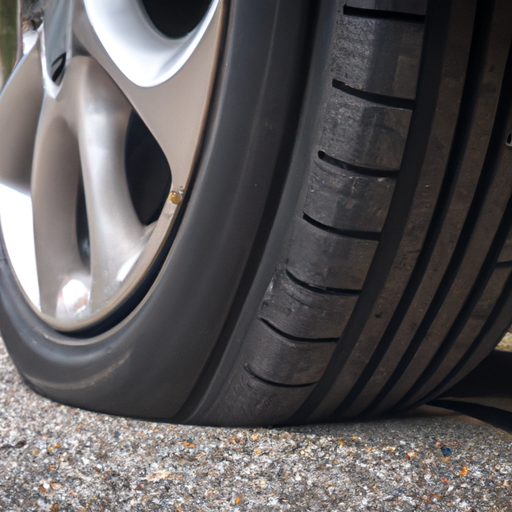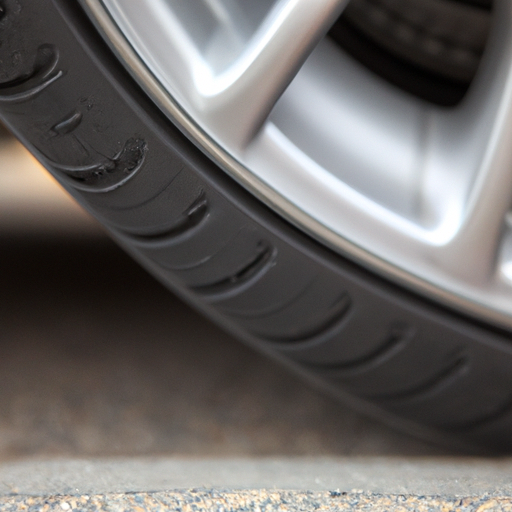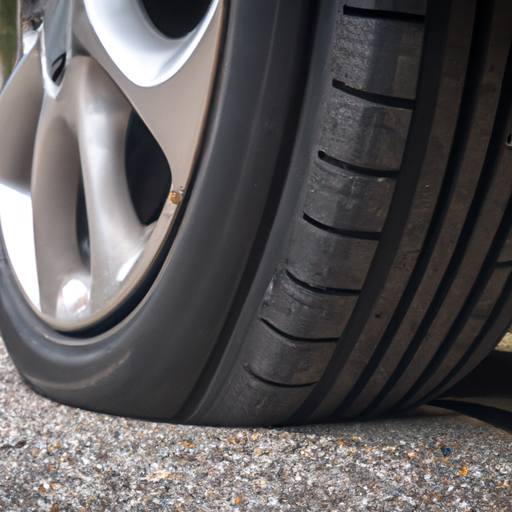If you’ve ever experienced a mysterious vibration in your vehicle, you may have wondered if it’s a result of bad wheel alignment. Well, wonder no more! In this article, we’ll explore the connection between bad wheel alignment and vibrations. Whether you’re a seasoned driver or just starting out on your road journey, understanding this correlation can help you ensure a smoother and safer ride. So, let’s get started and put those vibrations to rest!
What is Wheel Alignment
Definition of wheel alignment
Wheel alignment refers to the process of adjusting the angles of the wheels to make them parallel to each other and perpendicular to the ground. It is a crucial aspect of vehicle maintenance that ensures optimal performance and safety on the road. Proper wheel alignment enhances steering response, minimizes tire wear, improves fuel efficiency, and enhances overall road handling and safety.
Components involved in wheel alignment
Several components play a role in the wheel alignment process. These include the camber, toe, and caster angles.
The camber angle refers to the tilt of the wheel when viewed from the front or rear of the vehicle. If the top of the wheel leans inward, it is said to have negative camber, while outward lean indicates positive camber. The camber angle affects tire wear and the vehicle’s stability during cornering.
The toe angle, on the other hand, determines whether the wheels point inward or outward when viewed from above. Toe-in means the wheels are closer together at the front, while toe-out means they are further apart. Incorrect toe alignment can lead to uneven tire wear and cause the vehicle to pull to one side.
Lastly, the caster angle refers to the forward or backward tilt of the steering axis when viewed from the side. It affects stability and steering effort. A properly adjusted caster angle ensures straight-line stability and helps with steering returnability.
Symptoms of Bad Wheel Alignment
Unusual vibration in the steering wheel
One of the primary signs of bad wheel alignment is experiencing unusual vibrations in the steering wheel while driving. These vibrations may range from slight tremors to pronounced shaking, and they can be felt particularly when driving at higher speeds. Such vibrations indicate an imbalance in the wheels’ alignment, causing an uncomfortable driving experience.
Vehicle pulling to one side
Another symptom of poor wheel alignment is when the vehicle tends to pull to one side instead of maintaining a straight line. This pulling can occur in either direction depending on the misalignment. It may require constant steering correction and can be quite hazardous, as it may lead to veering into other lanes or oncoming traffic.
Uneven tire wear
Improper wheel alignment can result in uneven tire wear patterns. When the camber, toe, or caster angles are not aligned correctly, certain areas of the tire may experience increased or decreased contact with the road surface. Over time, this leads to irregular wear, such as excessive wear on the inner or outer edges of the tire. Regularly inspecting your tires for uneven wear can help identify potential alignment issues.
Off-center steering wheel
If you notice that your steering wheel is off-center when driving straight, it could be an indication of wheel misalignment. A properly aligned steering wheel should be centered, meaning the emblem or logo is in line with the dashboard or the vehicle’s body. An off-center steering wheel suggests that the wheels are not aligned symmetrically, affecting the vehicle’s overall stability and handling.
Abnormal tire squealing
When the wheels are out of alignment, they generate excessive friction against the road surface. This increased friction can cause the tires to produce abnormal squealing or screeching noises while driving, especially when taking turns. These noises are a result of the tires not rolling smoothly, and they indicate a potential issue with the wheel alignment that should be addressed promptly.

Causes of Bad Wheel Alignment
Impact with potholes or curbs
One common cause of wheel misalignment is an impact with potholes, curbs, or other road hazards. When a vehicle hits a pothole or a curb at high speed, the impact can jolt the wheels out of alignment. This can disrupt the camber, toe, and caster angles, leading to poor wheel alignment and subsequent issues with steering, tire wear, and overall vehicle dynamics.
Worn-out suspension components
The suspension system plays a vital role in maintaining proper wheel alignment. Over time, various suspension components such as control arms, ball joints, and bushings can wear out or become damaged. When these components deteriorate, they can no longer hold the wheels in the correct alignment, resulting in misalignment issues. Regular inspection and maintenance of the suspension system can help prevent alignment problems.
Improper installation of suspension parts
Improper installation or replacement of suspension components can also lead to wheel misalignment. If the new components are not installed correctly or if there are errors in the alignment process, it can throw off the angles of the wheels. This emphasizes the importance of having suspension work done by trained professionals who follow manufacturer guidelines and ensure proper alignment.
Gradual misalignment due to wear and tear
Even without any sudden impact or component failure, wheel alignment can gradually become compromised due to regular wear and tear. As a vehicle accumulates mileage, the suspension components and steering linkage may experience natural wear. This can gradually shift the wheel alignment out of specification. Regular alignment checks and maintenance can help detect and address these gradual misalignment issues.
How Wheel Alignment Affects Vehicle Dynamics
Importance of proper wheel alignment
Proper wheel alignment is essential for maintaining optimal vehicle dynamics. When the wheels are correctly aligned, the vehicle steers, handles, and responds to driver input as intended by the manufacturer. It ensures a smooth and comfortable ride, safe maneuverability, and even tire wear.
Effects on steering response
Wheel alignment directly affects the steering response of a vehicle. When the alignment is off, the vehicle may feel sluggish or unresponsive to steering inputs. This can make it difficult to maintain control, especially in emergency situations. On the other hand, properly aligned wheels enhance steering response, allowing drivers to navigate curves, turns, and obstacles with confidence and precision.
Impact on tire wear
Incorrect wheel alignment can lead to uneven tire wear, causing tires to wear out prematurely. When the wheels are misaligned, certain areas of the tires may bear more weight and experience increased friction. This leads to irregular wear patterns, such as cupping or feathering. Uneven tire wear not only reduces the lifespan of the tires but can also compromise vehicle safety and handling.
Influence on fuel efficiency
Improper wheel alignment can also impact a vehicle’s fuel efficiency. When the wheels are not aligned correctly, they introduce additional rolling resistance, requiring the engine to work harder to maintain speed. This increased resistance can result in decreased fuel efficiency, causing lower mileage per gallon. Having properly aligned wheels helps optimize fuel efficiency, reducing the vehicle’s carbon footprint and saving on fuel costs.
Consequences on road handling and safety
Bad wheel alignment can significantly impact the overall road handling and safety of a vehicle. Misaligned wheels can lead to unpredictable steering behavior, compromised stability, and reduced braking performance. These effects increase the risk of accidents or loss of control, especially in adverse driving conditions. Proper wheel alignment ensures a safe and secure driving experience by maintaining optimal road handling capabilities.

Can Bad Wheel Alignment Cause Vibration?
Mechanics of wheel vibration
Wheel vibration is a phenomenon that occurs when the rotating wheel and tire assembly does not spin smoothly. It can manifest as a pulsation, shaking, or vibration sensation felt in the vehicle. The source of the vibration can originate from various factors, including uneven tire wear, improper wheel balance, or problems with the suspension or steering components.
Relationship between wheel alignment and vibration
While wheel alignment issues are not typically the sole cause of wheel vibration, they can contribute to or exacerbate the problem. When the wheels are misaligned, it can lead to uneven tire wear or create imbalances in the tire and wheel assembly. These imbalances can cause the wheels to vibrate as they rotate, resulting in noticeable vibrations that are felt by the driver.
Indications of alignment-related vibration
Vibrations caused by wheel misalignment may be felt primarily in the steering wheel, although they can also be present throughout the vehicle. The intensity and frequency of the vibrations can vary depending on the severity of the misalignment. If you experience persistent or worsening vibrations while driving, it is essential to have your wheels checked for both alignment and balance to pinpoint the source of the vibration accurately.
Other Possible Causes of Vibration
Unbalanced wheels and tires
In addition to wheel alignment, wheel and tire imbalances can also cause vibrations. When a wheel and tire assembly is not properly balanced, it can result in uneven weight distribution. This imbalance can cause the wheels to vibrate when spinning, leading to steering wheel vibrations and an overall uncomfortable driving experience.
Worn-out wheel bearings
Wheel bearings are responsible for allowing the wheels to rotate smoothly and with minimal friction. Over time, these bearings can wear out, leading to increased roughness or play in the wheel assembly. This degradation can result in vibrations that are felt in the steering wheel and throughout the vehicle. Regular maintenance and inspection of wheel bearings are crucial for identifying and addressing any potential issues.
Faulty braking system
A faulty braking system, particularly warped brake rotors or worn brake pads, can also contribute to vibrations while driving. When the brakes are applied, any irregularities in the braking components can cause the steering wheel to shake or the vehicle to vibrate. Routine brake inspections and maintenance can help prevent these issues and ensure a safe braking performance.
Engine-related issues
In some cases, vibrations can originate from engine-related issues. Engine mounts, for example, are responsible for minimizing engine vibration and transferring it to the vehicle’s chassis. If the engine mounts degrade or become damaged, excessive engine vibration can be transmitted to the steering wheel and the rest of the vehicle. Regular engine maintenance and inspection can help identify and address potential vibration-inducing problems.

The Role of Suspension in Minimizing Vibration
Suspension’s impact on overall vehicle smoothness
The suspension system plays a vital role in enhancing the overall smoothness and comfort of a vehicle’s ride. It helps minimize the effects of road imperfections and uneven surfaces on the vehicle and its occupants. The suspension absorbs shocks and vibrations, allowing for a more stable and comfortable driving experience.
Interplay between wheel alignment and suspension
Wheel alignment and the suspension system are closely interconnected, working together to maintain optimal vehicle dynamics. When the wheels are out of alignment, it can negatively impact the suspension system’s ability to absorb vibrations. Conversely, a properly aligned suspension system promotes a smoother ride and minimizes vibrations transmitted from the road to the vehicle.
Aligning suspension components to prevent vibration
To ensure a vibration-free ride, it is crucial to properly align the suspension components during wheel alignment. This involves adjusting the suspension’s various angles, such as the control arm angles and the position of the steering linkage. Aligning these components not only helps prevent vibrations but also optimizes handling, steering response, and overall vehicle performance.
Diagnosing Wheel Alignment Problems
Visual inspection of tire condition
Visual inspection of tire condition is an essential first step in diagnosing potential wheel alignment problems. Look for signs of uneven tire wear, such as excessive wear on one side, cupping, or feathering. These irregular wear patterns are often indicative of misaligned wheels. Additionally, inspect the tires for any bulges, cuts, or other damage that may affect their performance or indicate a need for alignment.
Measuring tread wear patterns
Another diagnostic method involves measuring the tread wear patterns across the tires. You can use a tread depth gauge or even a coin to measure the depth of the tread at different points on the tire. Uneven tread wear, with one side of the tire wearing more than the other, can suggest misalignment issues.
Checking steering wheel alignment
Checking the alignment of the steering wheel is a straightforward diagnostic technique. With the vehicle on a level surface and the steering wheel centered, observe if the emblem or logo is aligned with the dashboard or the vehicle’s body. If the steering wheel is off-center, the wheels may be misaligned and in need of adjustment.
Utilizing alignment-specific diagnostic tools
For a more precise diagnosis, utilizing alignment-specific diagnostic tools is recommended. These tools include laser or digital alignment systems that measure the angles of each wheel accurately. By using these advanced tools, technicians can identify precise measurements for each wheel’s camber, toe, and caster angles, allowing for accurate adjustments to correct any misalignment.

Addressing Wheel Alignment Issues
Professional wheel alignment services
When dealing with wheel alignment issues, it is best to seek professional wheel alignment services. Trained technicians have the expertise, experience, and specialized equipment necessary to accurately diagnose and correct misalignments. They can use alignment machines to measure the angles of each wheel and make the necessary adjustments to bring them back into proper alignment.
Importance of regular alignment checks
Regular alignment checks are crucial to prevent or address any potential wheel alignment problems before they worsen. It is recommended to have the wheels aligned at least once a year or whenever you notice any symptoms of misalignment. By staying proactive with alignment checks, you can maximize tire life, optimize vehicle performance, and ensure a safe driving experience.
DIY alignment techniques
While professional alignment services provide the most accurate results, there are some basic DIY techniques to temporarily address minor alignment issues. These techniques include checking and adjusting tire pressures, ensuring equal tread depth on each tire, and visually inspecting for any obvious misalignment factors. However, it is important to keep in mind that DIY methods should only be used as temporary solutions until professional alignment can be performed.
Conclusion
Summary of wheel alignment’s impact on vibration
Wheel alignment plays a significant role in vehicle dynamics and can contribute to vibrations when it is out of specification. While wheel alignment is not typically the sole cause of vibrations, it can exacerbate existing issues or become a contributing factor. Misaligned wheels can lead to uneven tire wear, steering wheel vibrations, and compromised road handling.
Importance of timely alignment maintenance
Proper and timely maintenance of wheel alignment is essential for optimal vehicle performance and safety. Regular alignment checks help identify and address any misalignment early on, minimizing the risk of vibrations, uneven tire wear, and compromised handling. By staying proactive with alignment maintenance, you can enhance your driving experience and extend the lifespan of your tires.
Ensuring a smooth and safe driving experience
Ultimately, having properly aligned wheels is crucial for ensuring a smooth, comfortable, and safe driving experience. Proper alignment enhances steering response, minimizes tire wear, improves fuel efficiency, and optimizes overall road handling. By prioritizing wheel alignment maintenance, you can enjoy a hassle-free journey while promoting safety on the road.


